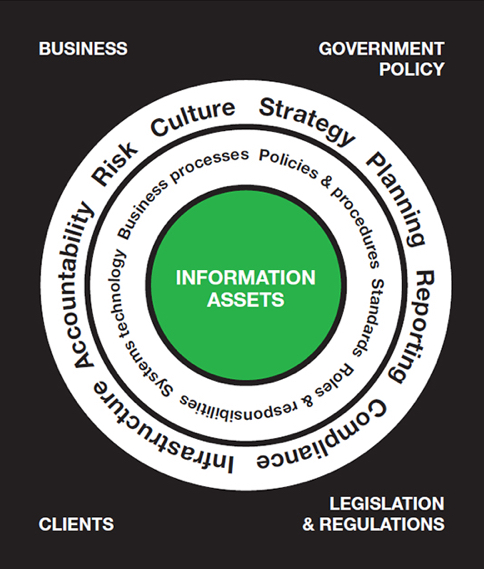This article appears in the Fall-Winter 2019 digital issue of DOCUMENT Strategy. Subscribe.

So, we find that the role of information governance throughout the electronic document life cycle is to align business information in support of business goals. In order to do this properly, there must be an information governance framework to define the business rules and processes that will be used in relation to business information.
The information governance framework describes organizational document management practices within a legal, regulatory, and business context. It is a way to standardize the manner in which electronic documents are managed—from the time they are captured or created to the time of their disposal. While this may sound like a records management approach, it is a strategy that is much needed across all sets of information—not just records—to ensure that consistent, effective, and defensible practices are used across the enterprise.

It is up to business leaders to help formulate, support, and enforce governance policies and practices across the enterprise and throughout the electronic document life cycle. It is also beneficial for these leaders to investigate how automation can help to manage governance over electronic documents, eliminating the possibility of human error or neglect while gaining in efficiency and consistency.

Image by: Prostock-Studio, ©2019 Getty Images
The core activities of the electronic document life cycle can be broken down into five elements or stages, including:
- Capture and Create: The ingestion of documents into the document management system using peripheral devices, including scanners, or electronically born documents in their native format
- Organize: The arrangement and management of electronic documents using a taxonomy for structure, establishing retention periods to ensure documents are kept for the proper length of time and destroyed when no longer needed, assigning security levels to control access and actions, applying metadata to enhance findability and trackability across the life cycle, and ensuring the disposal of documents that are no longer of value from the system
- Collaborate: The sharing of documents or providing access to them for the purpose of business development, conflict resolution, and review and approval cycles, just to name a few
- Search and Retrieve: The ability to locate documents needed to transact business and their retrieval for inclusion into a business process
- Publish and Deliver: Presenting documents to those authorized to access them in the format that is conducive to the recipient’s needs (for example, a client may request a PDF format while legal may require the native format)
The Information Governance Framework
Information governance, according to Forrester Principal Analyst Cheryl McKinnon, is defined as "a holistic strategy for using and managing information to meet business objectives. Information governance assures the quality of content and data, maximizes its value, and ensures that security, privacy, and life-cycle requirements are met."So, we find that the role of information governance throughout the electronic document life cycle is to align business information in support of business goals. In order to do this properly, there must be an information governance framework to define the business rules and processes that will be used in relation to business information.
The information governance framework describes organizational document management practices within a legal, regulatory, and business context. It is a way to standardize the manner in which electronic documents are managed—from the time they are captured or created to the time of their disposal. While this may sound like a records management approach, it is a strategy that is much needed across all sets of information—not just records—to ensure that consistent, effective, and defensible practices are used across the enterprise.

The Information Governance Framework
©2019 National Archives of Australia
For example, the National Archives of Australia (NAA) outlines a concise overview of an information governance framework as follows:
- Outlines the broad environment within which information is created and managed
- Describes the factors and business drivers that determine or influence the creation, management, and use of information, including legislation, regulations, compliance, risk, and business needs
- Documents the principles that guide the creation, management, and use of information
- Provides an overarching description of how information is governed with particular emphasis on whole-of-agency coordination, planning, and leadership
- Documents the organization's commitment to information governance and provides senior management endorsement
Putting It All Together
Today, we are all becoming information stewards and curators. As such, the responsibility falls upon each and every person in the enterprise to manage, share, and use business information properly throughout its life cycle. This can only happen when there is a well-defined, maintained, and enforced information governance framework outlining the rules and procedures for employees to follow.It is up to business leaders to help formulate, support, and enforce governance policies and practices across the enterprise and throughout the electronic document life cycle. It is also beneficial for these leaders to investigate how automation can help to manage governance over electronic documents, eliminating the possibility of human error or neglect while gaining in efficiency and consistency.
Bob Larrivee is a recognized expert in the application of advanced technologies and process improvement to solve business problems and enhance business operations. Follow him on Twitter @BobLarrivee or visit boblarriveeconsulting.com.












